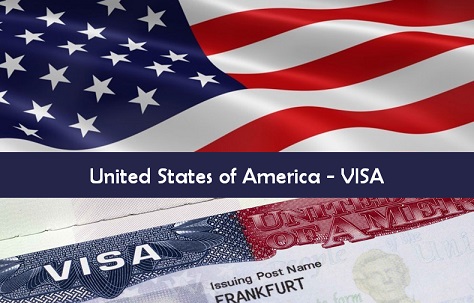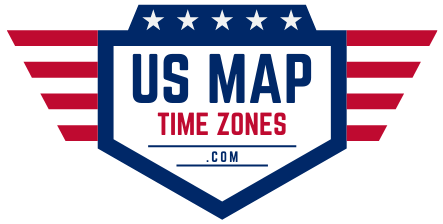General information about the USA
The United States is the second largest country in the world and consists of large urban areas and vast, sparsely populated plains with beautiful natural landscapes. (General information about the USA)
Cultures in the United States are equally very diverse. Due t the influx of immigrants who have entered the United States since the 17th century, the U.S. consists of a colorful mix of cultures from around the world.
The country can feel overwhelming; everything is more significant, prominent, and extensive. For example, supermarkets are enormous, food portions are large, and skyscrapers are huge.
Americans think big, and everything seems possible there. There’s a reason the United States is known as a country of limitless possibilities.
The “American dream”, the diversity and contrasts in nature and culture, make the United States a popular vacation destination.
Facts and numbers
- Capital – Washington D.C.
- Size – 9,826,675km2
- Inhabitants – 328,869,759 inhabitants (2018)
- Religion – Christian: 79.8%, Jewish: 1.4%, Muslim: 0.6%
- Time difference – 5 to 10 hours before
- drive from the U.K. or Ireland
- Electricity – 110V (travel plug recommended)
- life – Men: 74.4 years, women: 80.0 years
- Obesity – 66.7% of Americans suffer from obesity
Map
The United States used to consist of 13 states, but in the 19th and 20th centuries, 37 states were added to the U.S., bringing the total number of states to 50. The five largest cities are New York, Los Angeles, Chicago, Houston and Philadelphia.
History
The United States is a relatively modern country, so it doesn’t have many old structures, unlike Italy.
This is due in part to the way America came to be. Many people believe that Columbus did not discover America in 1492, but it was probably discovered much earlier by Asian explorers.
At that time, Native Americans were already living on the mainland. When the Dutch came to the U.S., they called it “New Holland”, and New York became known as “New Amsterdam”. That is why to this day, many streets and shops bear Dutch names.
Similarly, many American surnames sound Dutch, even though the United States was under Dutch occupation for a relatively short time.
Independence
On July 4, 1776 (Independence Day), thirteen British colonies declared independence. England was unhappy about this, and a war broke out between the (former) colonies and England.
After many brutal years of war, the Treaty of Paris was signed in 1787, and George Washington became the first president of the United States of America.
Other important historical facts
Some of the most shocking events in the history of the United States are the American Civil War (1861-1865) and the Great Depression in the 1930s.
During the Civil War, the northern states fought against the southern states and carried out many battles and bloody campaigns.
During the Great Depression, the U.S. economy fell into a deep crisis, and about a quarter of the total population lost their jobs.
Language and culture
In the United States, English is the primary language. Because the United States is large and consists of 50 states, you may come across other languages, such as Spanish, Chinese, and French, during your trip. Navajo, a Native American language, is still spoken by 178,000 people.
National holidays
The United States has a good number of national holidays. Please note that a public holiday on Monday may affect the previous weekend’s activities. (information about the USA)
- What are the job opportunities in the USA for foreigners
- The Step by Step Guide to Getting Your Job in the USA
Holiday – Governments, companies and banks open/closed
- January 1: New Year’s Day – Most institutions are closed
- Third Monday in January: Martin Luther King Day – Most government institutions and banks are closed
- February 14: Valentine’s Day. Most institutions are open
- Third Monday in February: Presidents’ Day – Most government institutions and banks are closed
- March 17 – Irish holiday of Saint Patrick’s Day, most institutions are open
- One Sunday in March or April: Holy Week Most institutions are open
- Last Monday in May: Memorial Day – Most government institutions and banks are closed
- July 4: Independence Day – Most institutions are closed
- First Monday in September: Labor Day – Most institutions are closed
- Second Monday in October: Día de la Raza – Most government institutions and banks are closed
- October 31: Halloween – Most institutions are open
- November 11: Veterans Day – Most government institutions and banks are closed
- Fourth Thursday in November: Thanksgiving – Most institutions are closed
- December 24: Christmas Eve – Most institutions are closed
- December 25: Christmas Day – Most institutions are closed
Time and weather
Because the U.S. is so large, it has a wide variety of climates: from cold tundra climates to tropical rain forest climates. Northwestern America is predominantly humid, while the middle of the U.S. is quite dry and warm.
Be sure to check the weather and climate of the state or place you are traveling to. Prepare appropriately for different weather circumstances to make the most of your trip. (information about the USA)
The best travel period in terms of weather
Weather-wise, it’s generally best to travel to the U.S. in the spring or fall. So temperatures are pleasant in most places, and you can snag a bit of spring. In winter, it rains more, while summer can bring very high temperatures in certain states. (information about the USA)
Hurricanes and tornadoes
Hurricanes and tornadoes occur relatively frequently in the United States, although this differs from area to area.
There can be bumps during hurricane season from June through November (although most activity occurs between late July and early September) when hurricanes arise much more frequently in areas with warm seawater (such as Florida).
Check the weather forecast
Because the United States is so large and has such diverse climates, it can be challenging to know precisely what the weather and climate are in the country.
Be sure to research the local weather (including averages and forecasts). It’s also important to note that late December through March can be very busy in the United States; this also differs from area to area. (information about the USA)
Trip
In America, you can travel comfortably by plane, train, bus, boat, subway, taxi, motorhome or (rental) car.
Public transport is generally well organized in the cities. However, this is not always the case outside of these cities.
A plane is usually the best option if you want to cross long distances in a short period since domestic flights are generally cheaper than the bus or train.
The metro and taxis are adequate for getting around cities quickly, and prices are usually reasonable.
In general, renting a car is the best option to travel in the USA; with a vehicle, you have the freedom to go and stop where you want and when you want. (information about the USA)
Immigration
Everyone needs a valid passport to travel to the United States, and it has to be valid until after the end of your trip.
Children and babies must also have their passports; you cannot travel to the U.S. with your baby if the child is listed on your passport.
If you intend to travel across a U.S. border (in or out) with more than €10,000 in cash, you must report this to the immigration service. Importing drugs, fruits, meats, seeds, dairy products and lottery tickets is prohibited. (information about the USA)
Money
In the U.S., people pay with the U.S. dollar. The dollar’s value can fluctuate compared to other currencies, such as the euro; be sure to check the exchange rate of your national currency against the dollar before your trip. (information about the USA)
Fixation
You can generally use your debit card to pin at banks and stores in the U.S., as these cards often come with the Maestro logo.
Note that you often have to pay a small fee to be able to pay with a debit card and convert your money to dollars.
Also note that before departure, you may need to enable foreign posting through your bank.
Many banks have implemented this feature to make banking abroad more secure. Contact your bank for more information. (information about the USA)
Credit card
In the USA, paying for everything with a credit card (or cash, of course) is customary. This also means you don’t have to carry cash, which can make your trip and stay safer overall. (information about the USA)
Tips
Most Americans tip a healthy 15% in restaurants when they receive good service. Wages in American restaurants are often meager because this is expected to be offset by tips. (information about the USA)
Safety
The United States is a safe country to travel to. However, the country also has less pleasant neighborhoods that it is better not to go to, especially in the larger cities.
Be sure to check upon arrival where you should get the best travel on your trip and which places to avoid. If you stay in the desert, beware of the wild animals here, such as bears. Never leave food scraps. (information about the USA)
Travel tips
No special travel warnings apply to the U.S. Make sure you always have your travel documents (such as your driver’s license and passport) with you.
Also, make a digital copy of your travel documents; if you lose them, you can always reprint them.
We hope you like our article on General information about the USA.
Thanks for visiting US Map Time Zones
If u have any query, you can ask in comment section. Thanks


